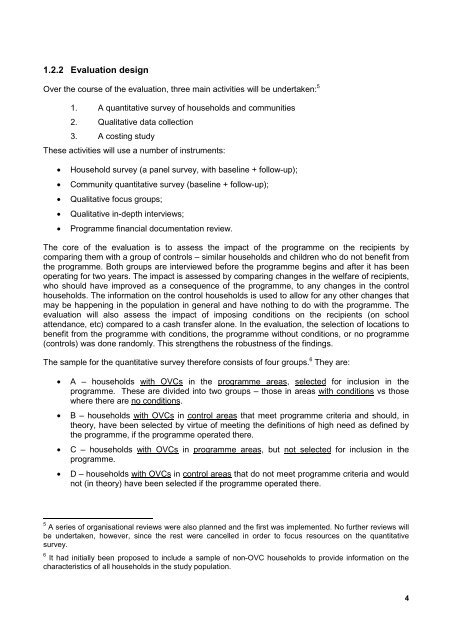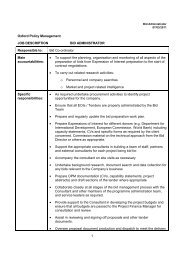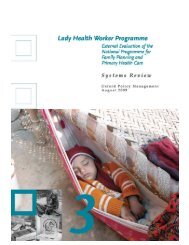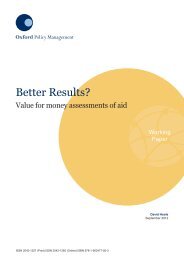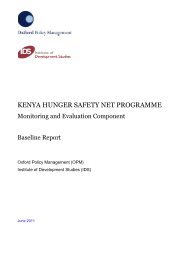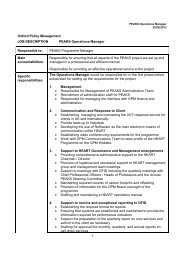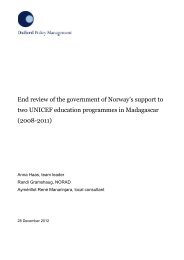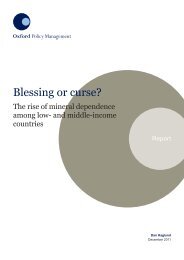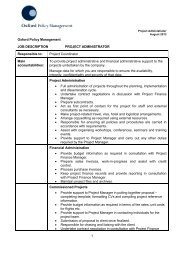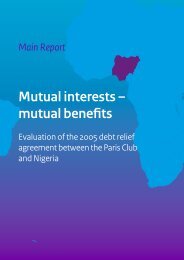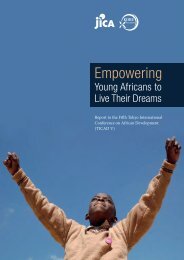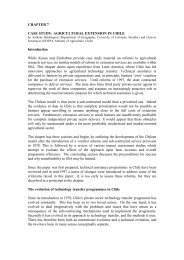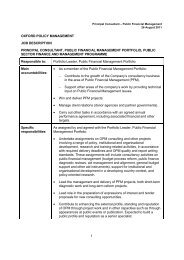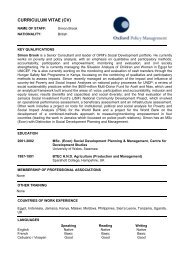Kenya OVC-CT Programme Operational and Impact Evaluation
Kenya OVC-CT Programme Operational and Impact Evaluation
Kenya OVC-CT Programme Operational and Impact Evaluation
Create successful ePaper yourself
Turn your PDF publications into a flip-book with our unique Google optimized e-Paper software.
1.2.2 <strong>Evaluation</strong> designOver the course of the evaluation, three main activities will be undertaken: 51. A quantitative survey of households <strong>and</strong> communities2. Qualitative data collection3. A costing studyThese activities will use a number of instruments:• Household survey (a panel survey, with baseline + follow-up);• Community quantitative survey (baseline + follow-up);• Qualitative focus groups;• Qualitative in-depth interviews;• <strong>Programme</strong> financial documentation review.The core of the evaluation is to assess the impact of the programme on the recipients bycomparing them with a group of controls – similar households <strong>and</strong> children who do not benefit fromthe programme. Both groups are interviewed before the programme begins <strong>and</strong> after it has beenoperating for two years. The impact is assessed by comparing changes in the welfare of recipients,who should have improved as a consequence of the programme, to any changes in the controlhouseholds. The information on the control households is used to allow for any other changes thatmay be happening in the population in general <strong>and</strong> have nothing to do with the programme. Theevaluation will also assess the impact of imposing conditions on the recipients (on schoolattendance, etc) compared to a cash transfer alone. In the evaluation, the selection of locations tobenefit from the programme with conditions, the programme without conditions, or no programme(controls) was done r<strong>and</strong>omly. This strengthens the robustness of the findings.The sample for the quantitative survey therefore consists of four groups. 6 They are:• A – households with <strong>OVC</strong>s in the programme areas, selected for inclusion in theprogramme. These are divided into two groups – those in areas with conditions vs thosewhere there are no conditions.• B – households with <strong>OVC</strong>s in control areas that meet programme criteria <strong>and</strong> should, intheory, have been selected by virtue of meeting the definitions of high need as defined bythe programme, if the programme operated there.• C – households with <strong>OVC</strong>s in programme areas, but not selected for inclusion in theprogramme.• D – households with <strong>OVC</strong>s in control areas that do not meet programme criteria <strong>and</strong> wouldnot (in theory) have been selected if the programme operated there.5 A series of organisational reviews were also planned <strong>and</strong> the first was implemented. No further reviews willbe undertaken, however, since the rest were cancelled in order to focus resources on the quantitativesurvey.6 It had initially been proposed to include a sample of non-<strong>OVC</strong> households to provide information on thecharacteristics of all households in the study population.4


